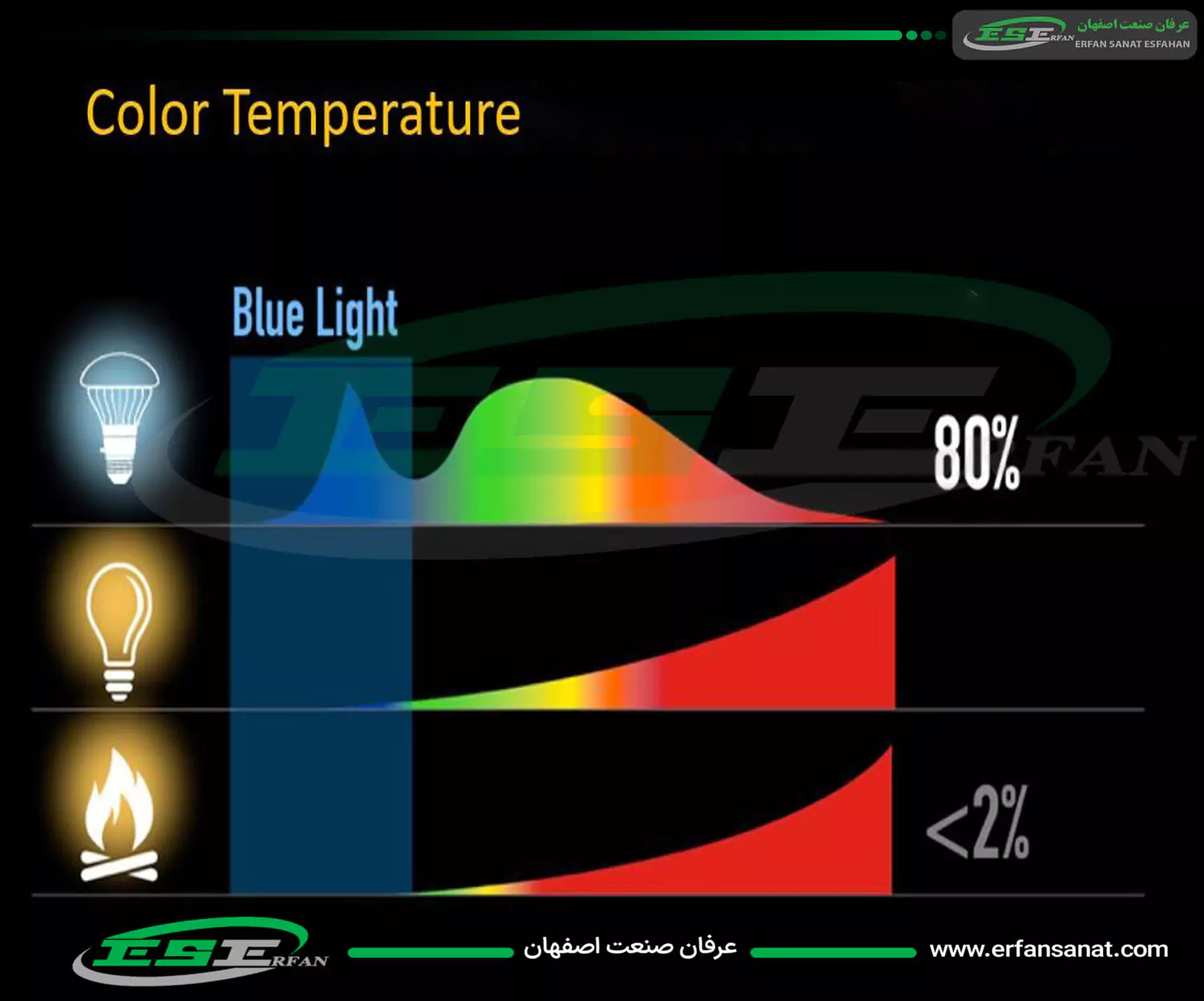- Visual Comfort: This refers to ensuring that, upon entering an environment, we do not experience visual fatigue. Factors such as good color rendering and uniform brightness distribution are crucial for achieving visual comfort.
- Visual Performance: The lighting in an environment should be adequate to meet the eye’s needs for viewing objects. At the same time, factors causing glare should be minimized.
- Visual Ambience: Visual ambience refers to the ability to perceive objects in three dimensions through the appropriate selection of color and direction of light.
Illumination Level:
Glare is a disruptive factor in lighting that reduces the field of vision and causes fatigue for individuals. It should be minimized as much as possible. Improper use of light fixtures, placing lamps or windows in inappropriate positions, and the high reflectivity of various surfaces are all factors that contribute to glare. Glare exists in two forms: direct glare and indirect glare.
Direct Glare:
Direct glare occurs due to the improper shape of the light source and placing the light source in an inappropriate location. The presence of a bright light source in the field of view leads to discomfort (psychological glare) and reduced visual performance (physiological glare). Glare in outdoor lighting environments is of much greater significance. For example, in street lighting, glare can reduce the driver’s visibility, posing potential safety risks.
Indirect (Reflected) Glare:
Indirect or reflected glare arises from the reflection of light off smooth surfaces within the field of view, causing visual disturbance and reducing the contrast needed for proper vision. Any surface at an inappropriate angle or with high contrast can create reflected glare, which can be minimized by adjusting the angle or intensity of the light source or by diffusing and changing the color of the reflective surface.
The brightness of a surface depends on factors such as the intensity of illumination, the direction of the light path hitting the surface, the characteristics of the surface (whether it is smooth, matte, or colored), and the location from which the surface is viewed.
If there is a significant difference in brightness between the surrounding environment and the area that the individual’s eyes constantly engage with, it leads to visual fatigue. In general, it is recommended that the brightness of the surrounding environment should be less than one-third of the brightness of the work surface. Additionally, when high brightness is necessary for precise tasks on a work surface, the brightness should not exceed ten times the surrounding environment’s brightness.
In urban lighting design, brightness is the primary criterion for determining the quality of the lighting system. Therefore, in the lighting of historical buildings and outdoor spaces, it is recommended to have uniform brightness so that it appears the same to the observer’s eyes. Moreover, in the design of street pathways, uniform brightness distribution is important for safety reasons, helping to identify obstacles and hazards.
Light Direction:
The ability to perceive three-dimensional objects, buildings, and surfaces is influenced by the direction of light, as well as the balance of light and shadow (chiaroscuro). The direction of light can either reveal the shape and texture of objects or leave them ambiguous. The position of the light source plays a significant role in the perception of three-dimensional objects. The ability to perceive volumes is affected by the degree of light and shadow present on them.





